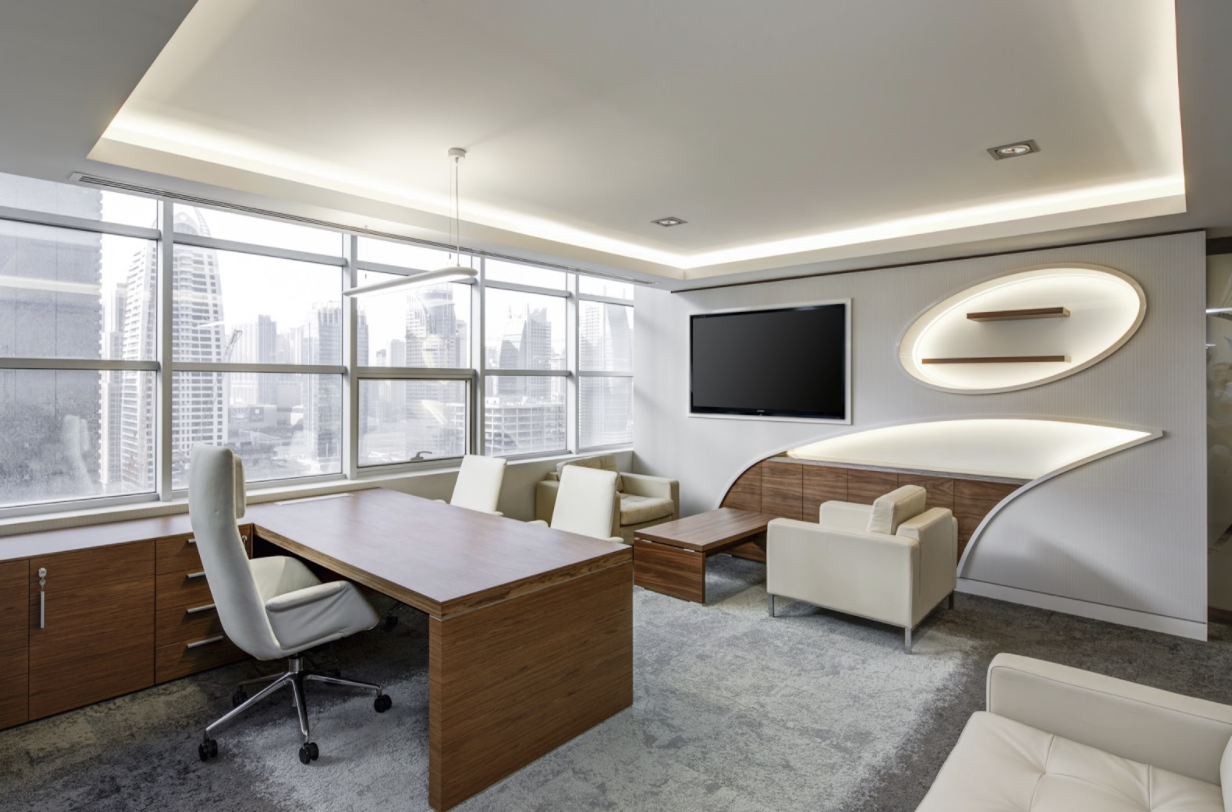When it comes to keeping your company clean and organized, there is no one-size-fits-all solution. The key is finding what works best for you. Some organizations might want to invest in a commercial cleaning service. In contrast, others might prefer an at-home deep cleaning regimen that can be done with everyday household items like vinegar and baking soda. Whatever the case may be, here are some steps you can take to help keep your workplace as clean as possible.
1. Scheduled Vacuuming
The first step to a clean office is having a regularly scheduled cleaning day. If you have not hired an outside service, then taking on this responsibility yourself will be key in creating your own schedule. However, if you are using a commercial cleaner, it would be best for them to come during the hours that most employees are gone or work from home. This way, they can bring their equipment and tools into the building without interrupting any workers’ schedules as well as keep disruption at a minimum, so everyone gets back to business as quickly as possible when they leave each evening. Scheduling vacuuming should happen before deep cleaning takes place because after all of those hard-to-reach places have been dusted and wiped over with disinfectant spray, you are not going to want to send more grime back into the air. Scheduling vacuuming can be done before deep cleaning takes place because after all of those hard-to-reach places have been dusted and wiped over with disinfectant spray, you are not going to want to send more grime back into the air.
2. Provide Hand Sanitizers
Providing hand sanitizers for employees should be a part of your scheduled cleaning day because this is one of the most important tools you can provide to keep germs at bay. After all, so many different bodily fluids and microbes come into contact with company property on an hourly basis: from people touching doorknobs and button panels after sneezing or coughing to computers being handled by sweaty palms. Hopefully, by providing access to hand sanitizer throughout the building, workers will feel more inclined to use it before picking up their phones or starting up their laptops than they would if doing such things were discouraged altogether. Providing hand sanitizers for employees should be a part of your scheduled cleaning day because this is one of the most important tools you can provide to keep germs at bay.
3. Set Up A Garbage Disposal System
It is important to have a designated garbage disposal system in the office, or at least an easily accessible trash can emptying its contents frequently. This will get rid of any spoiled food that might be lingering around and reduce odors and excess waste, which could become breeding grounds for germs if they are left uncleaned on floors or under desks all day long. Remember: one man’s trash is another man’s treasure, so do your best to keep Rolodex cards containing personal information away from public eyes because even though it may seem like an invasion of privacy now; you never know who might end up with access to such things once their job responsibilities change down the road. Consider hiring Commercial Dumpster Rentals to help you get rid of all trash.
4. Take Care of Bathroom Facilities
The bathroom is often one of the dirtiest places in any given building. It gets even worse if it is something like a warehouse with no ventilation or windows for fresh air to enter through. Good thing there are some steps you can take on your scheduled cleaning day that will help keep things cleaner and fresher than they would have otherwise been had employees tried to handle this task themselves: Make sure there are toilet seat covers available at all times, especially when men use urinals but women do not because the spray from their urine might land onto the seat where someone else then has to sit down without knowing what germs could be waiting for them If possible, invest in an auto-wash system, so workers don’t have access to water faucets at all times, and if an auto-wash system can’t be installed in the workplace itself then make sure there are plenty of paper towels available at all times to help keep things clean or invest in wet-jet machines that can disinfect surfaces with the touch of a button.
5. Eat and Drink at Designated Areas
People who eat and drink at their desks are a big no-no in most offices because not only can it leave stains on keyboards or carpets, but it also contributes to the spread of germs through saliva. Ensure there are designated seating areas where employees can enjoy their lunches, preferably ones with tables and chairs that have been disinfected after each use. Drinking water fountains should be placed around the building as well, if possible, so workers do not feel tempted to keep plastic bottles filled up under their desks for easy access every time they get thirsty.
6. Add Plants and Greenery
Plants are beautiful to look at, but they also have the added benefit of keeping things cleaner because microbes cannot survive in their presence without them being killed off. This is why it is important to place plants around the office during your scheduled cleaning day, so workers do not feel tempted to bring potted vegetation in themselves. Spritzing leaves with water helps keep germs away, too, by making sure there was no dust on any given plant before people touched it and ended up bringing whatever dirt or grime from outside into the building with them.
7. Install Air Conditioning Units
Keeping rooms and hallways cool during the summer months will not only make employees more comfortable but can also result in a cleaner work environment as well. This is because warm air full of sweat, dust particles from outside, smoke from cigarettes, or chemicals being emitted by carpets or furniture that has been treated with fabric-safe agents all contribute to elevated temperatures making it easier for germs to thrive. In addition, employees should be reminded to keep windows closed at all times. Hence, no insects come flying inside even if they are extremely hot out on the street, which could lead them directly into an office space without any barriers getting in their way. Also: before anyone complains about how cold you have made things, now remember these people have fans blowing right over their chairs or desks to stay cool by increasing air circulation, which also helps keep the atmosphere cleaner.
8. Minimize Clutter on Desks
Another major contributor to the spread of germs around an office is clutter on desks, but it can be hard for employees to keep things neat and organized after a long day at work, so there are some steps you should take as a manager. This includes encouraging workers to bring in their supplies from home instead of using what they find at the office, so no one feels tempted to start sharing them with everyone else. Employees also need a place where they can store these items that will not get dusty or filled up with paper clips or staples by accident which could lead to people touching those objects without knowing just how much dirt might have been left behind during lunchtime when someone had sneezed nearby before going back to their desk again only this time without any hand sanitizer.
9. Encourage Employee Hygiene
No matter how microscopically clean your office is, it will not be enough to keep everyone healthy if employees do not take their hygiene seriously. This means making sure the bathrooms have plenty of soap and hand sanitizer sitting on shelves so people can use them multiple times a day even if they cannot find paper towels immediately after washing their hands which might lead to dry skin or cracked nails as a result. Not only that but managers should also encourage workers to bring in small containers from home containing any medications they might need, such as ibuprofen for headaches or antihistamines for allergies, because space at desks is limited. Those items tend to get dusty very quickly when left out in places where people pass by all the time without thinking.
10. Clean All Utensils Thoroughly
It is not enough to give workers access to clean cutlery and plates during lunch breaks because even though they might use them at the time, it does not mean germs are killed off immediately. This means encouraging everyone to take their own containers back home with them after using so they can be cleaned thoroughly before being used again, which should include running water over utensils or placing ceramic items in dishwashers where heat helps kill bacteria while high-powered jets of spray work on getting rid of any grime that remains stuck onto dishes despite washing.
In conclusion, there are many ways to keep the office clean, but none of them will work if employees do not cooperate by doing their part as well.










